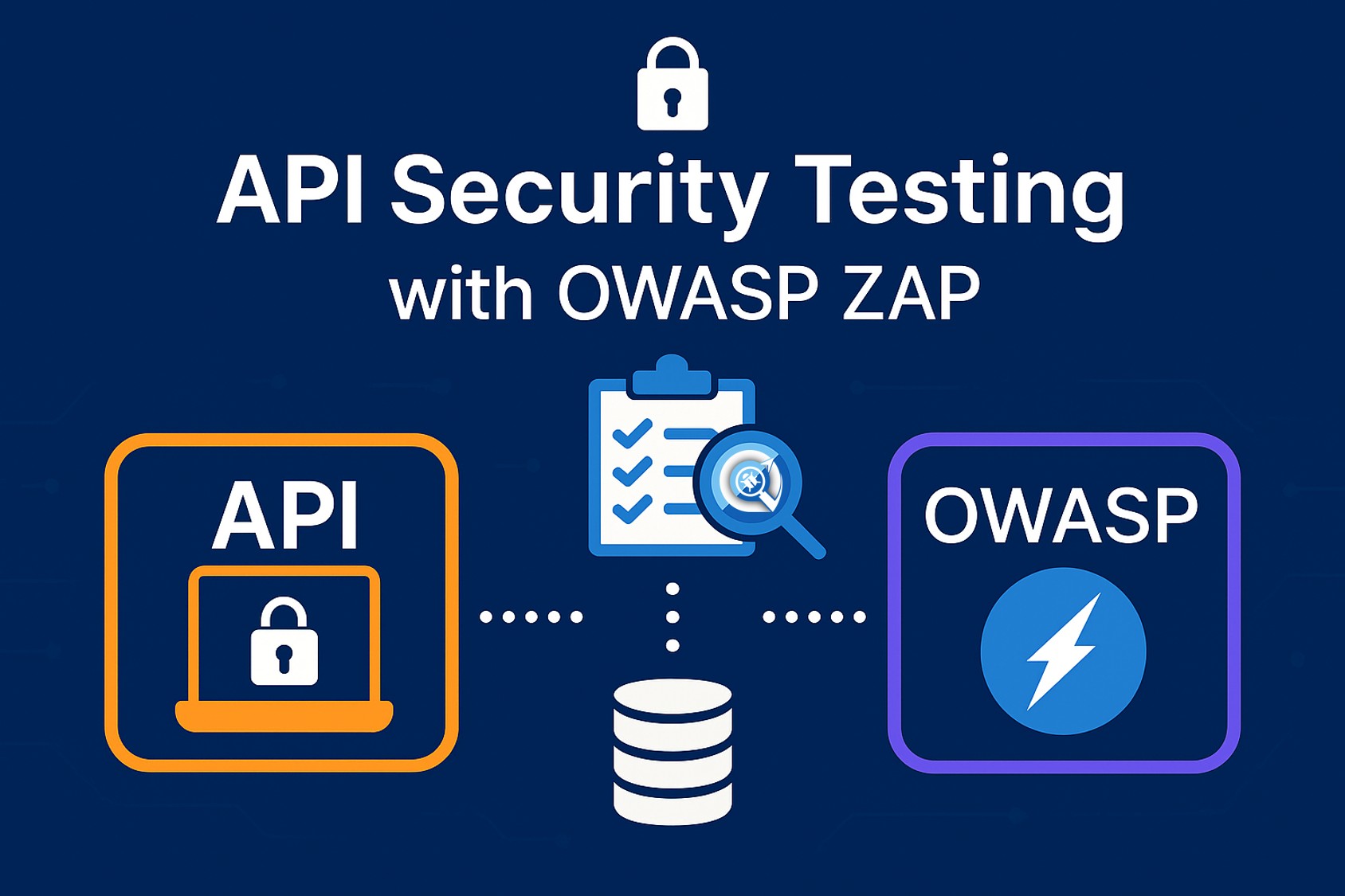Introduction
API exploitations are everywhere. In 2021, 91% of organizations faced challenges related to APIs. Most of the time, rogue endpoints are the root cause of issues experienced, and it seems as if they are caught when it is too late – a situation where an attack has occurred, and problems enable the attack to become apparent.
Being from unauthenticated API endpoints to accidentally deployed APIS, OWASP ZAP is the application that can locate and, therefore, prevent potential catastrophic accidental data leaks through its scanner named ZAP API. This article is a step-by-step tutorial on how to run a Scanner API using OWASP ZAP, helping developers safeguard their software against API attacks.
While ZAP does work remarkably well scanning APIS for vulnerabilities in runtime, for you, it may be a tough task to not only set but also manage ZAP security tools. For a fast and easy way to deploy Dynamic Application Security Testing (DAST), check out Jit’s configuration wizard, a tool that automatically deploys ZAP in a few simple steps.
What is the ZAP API Scanner?
API security management requires a constant challenge of endpoint monitoring alongside security verification for every endpoint.
The OWASP Zed Attack Proxy, known as ZAP, provides its services. The ZAP tool functions as a free and open-source platform that enables API vulnerability scanning. Every organization that shares its data and services externally needs to prioritize API Security implementation. OWASP ZAP provides API vulnerability detection through its scanning capabilities.
Understanding OWASP ZAP
OWASP ZAP functions as a penetration testing tool that detects security weaknesses in web applications and APIS. The tool functions as a proxy server to link the browser of the tester with the application during security assessments that combine manual and automated testing techniques.
Key Features of OWASP ZAP:
The security vulnerability detection system of OWASP ZAP supports both automated and manual analysis operations.
- Automated and manual scanning capabilities
- Passive and active scanning
- Support for scripting and automation
- Proxy-based testing
- Integration with CI/CD pipelines
Testers can use this feature set to discover API security problems, which include injection attacks together with authentication flaws and misconfigurations.
Running an API Scanner with OWASP ZAP, step-by-step
1. Install OWASP ZAP
- The first step for performing API security testing requires you to install OWASP ZAP.
- You can obtain the most recent version of OWASP ZAP from its official website.
- Follow the operating system-specific setup instructions to install the application, which supports Windows, macOS, and Linux.
2. Importing via the UI
The import function in the menu will enable you to bring in GraphQL Schema files from the OpenAPI support installation. The new dialog window provides an area to specify either the file path or URL of the import data.
3. Importing via the API
With the API, you can set definitions that come from URLs and local files for importing. Users can carry out this operation through the API Web UI by navigating to the OpenAPI page found in the Local API section. The dialog enables two choices between importing data from a file or a URL.
4. Spidering
OpenAPI add-on detects API definitions automatically during operation. The automatic detection system will assist spidering operations while enabling it to discover definitions. The spider operates within the boundaries of the URL it receives and views all other domains as inaccessible.
5. Using the API scanning script
Through scripting languages, ZAP enables users to create rules and triggers as well as define targets using JavaScript, Zest, Groovy, Kotlin, Python, and Ruby.
A self-written API scanning script enables users to focus their attacks on specific API regions while achieving greater precision in their assaults.
6. Command line options
OWASP ZAP provides a set of command lines for script writers to customize their scanning operations. You can use the following commands as a guide to help you write your script:
7. Scan rules
For OWASP ZAP, the scripts that define the scan rules are the channels of the attack. In practice, minimally, the API generator should use the Corrections API to delete or add all the rules as needed before testing. The default OWASP ZAP OpenAPI disables server-side rules containing iframes, and it makes the traffic go through the proxy. Instead, it will add two rules to the script: one to trigger an alert for HTTP response code errors and another for unexpected content types.
These rules, and the ability to adjust and update them, can be done in the configuration file. The configuration in the file has the defaults followed by the “-g” sequence. The core file that sets the API configuration file includes rules for passive and active scan processes.
Each type of rule concerning the file configures a passive or an active rule, which results in varied procedures. A passive rule that you alter will name only how the report entries look. After all, active rules are put aside if the Ignored status is attached to them. The passive rules are easy to compute, while the active rules can be time-consuming.
8. Specifying values
ZAP will always assign default values to you to get you started. Optionally, if you wish to set your values, you can do it via the ZAP command line option. These are a few instance configurations:
If you will use ZAP through a Docker instance, you will have to use the -z option for description. This option enables you to use a property file of your choice, thus not having to hard-code any values. Here is an example of the script:
9. Authentication
When protecting APIs with an authentication mechanism, you can specify the header values to get the required and applicable tokens. To make this happen, you will need to inform the ZAP software that this data should be retrieved and then saved temporarily.
Provide a series of example commands to assist you with this.
The above step will replace the default authorization headers with your custom one.
Best Practices for API Security Testing with OWASP ZAP
The following best practices will improve API security testing:
- The testing process should occur in a separate environment instead of production to protect data integrity.
- OWASP ZAP should integrate with CI/CD tools, including Jenkins and GitHub Actions for automatic scanning purposes.
- Proper API input validation is essential to prevent injection attacks.
- API access should be secured by implementing OAuth 2.0 in combination with JWT and Role-Based Access Control (RBAC).
- Regular analysis of API traffic logs helps detect abnormal activities.
- Continuous updates on OWASP ZAP will guarantee compatibility with security standards released after your installation.
How can you use ZAP to scan APIs?
Using ZAP is simple. You must set up ZAP to function for your API. API configuration requires the entry of your URL together with all necessary authentication parameters. You can start an API scan by pressing the “Attack” button after you finish the configuration.
The ZAP tool executes scans to identify vulnerabilities that exist within your API. The tool will notify you about detected vulnerabilities, which allows you to implement fixes.
The scanning process involves launching attacks on the application through which the tool searches for previously documented security issues. The Zap API scanner automatically identifies methods that help fix vulnerabilities that traditional manual searching cannot detect, while also providing automatic directions to resolve these issues. The process saves developers substantial time and effort and enhances the security standards of their applications.
The ZAP security tool enables API vulnerability detection through the identification of these security weaknesses:
- SQL Injection
- Cross-Site Scripting
- Cross-Site Request Forgery (CSRF)
- Server-Side Request Forgery (SSRF)
- Insecure Direct Object References
- Insecure Cryptographic Storage
- Failure to Restrict URL Access
- Brute force attacks
- Dictionary attacks
- Web application firewalls
- Web application scanners
Why API Security Testing is Essential
APIs are vulnerable as they present application logic and security information, making themselves the primary goal for hackers. The well-known vulnerabilities of API security are:
- Injection Attacks: SQL, XML, or Command Injection vulnerabilities
- Broken Authentication: Vulnerabilities are there because of weak authentication mechanisms that might be used by attackers to obtain unauthorized access
- Sensitive Data Exposure: The loss of sensitive information is due to not using the right encryption techniques
- Rate Limiting Issues: The APIS that do not implement and enforce such limitations, such as rate limiting, can be easily abused
- Security Misconfigurations: APIS are open to threats and vulnerabilities as a result of the wrong settings
- Improper Access Controls: There are no proper role-based access controls (RBAC) for the individuals affected
Case Study: Securing an E-Commerce API with OWASP ZAP
One big e-commerce company was facing a data exposure threat when the API security configurations were not set according to good practice. OWASP ZAP largely helped them out as follows:
- Revealed unauthorized entry to order details
- Realized the possible SQL Injection risks in their search requests
- Rate limits are consistently specified and enforced to protect against misuse and abuse.
OWASP ZAP was integrated into the company’s CI/CD pipeline, and this led to an 85% security improvement and fewer vulnerabilities.
Insights & Resources
Don’t miss the most recent developments in API security, such as those in OWASP ZAP.
- Blog: “How API Security Testing Can Prevent Data Breaches”
- eBook: “Securing APIs in the Era of Cyber Threats”
- Webinar: “Enhancing API Protection with OWASP ZAP”
Conclusion
API safety is the most vital aspect of modern software security. One of these is the OWASP ZAP, which is a very strong and open-source solution for identifying and solving API vulnerabilities. If these instructions are closely followed, security professionals and developers can significantly enhance the security of their application program interfaces by safeguarding sensitive data and ensuring their compliance with industry standards. As a result, they will be able to innovate by adding data points securely.
Consistent API security testing, together with the most secure approaches, not only places entities in a position to outpace unwanted threats strategically, but it also keeps their digital environments secure.




